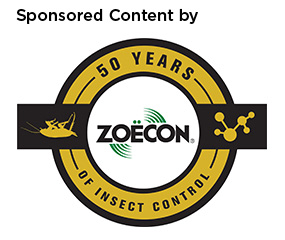 With warmer weather here and clients wanting to spend more time outdoors, summer pest control calls are rolling in. Are you treating the right areas of your clients’ backyards?
With warmer weather here and clients wanting to spend more time outdoors, summer pest control calls are rolling in. Are you treating the right areas of your clients’ backyards?
Mosquitoes, ants, ticks, wasps and other annoying pests can ruin anyone’s summer day. Brush up on your backyard pest control protocol with the tips below and get your clients back outside to enjoy the summer — with no callbacks.
CHOOSE YOUR SUMMER PEST:
Mosquitoes |
Fire ants |
Ticks |
Wasps & hornets |
Mosquitoes
As awareness of mosquito-borne illnesses such as West Nile virus, dengue and Zika virus increases, mosquito control has become an important source of revenue for many pest management professionals (PMPs).
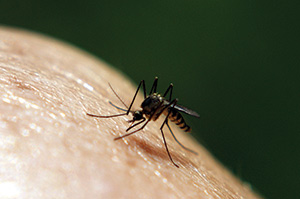
Photo courtesy of the Professional Pest Management Alliance
The most effective management techniques attack these pests at every stage of their life cycle. Mosquitoes breed in standing water, so it’s important to inspect in and around puddles, birdbaths, gutters, artificial containers and stormwater retention ponds for signs of infestations.
To prevent mosquito larvae from developing into breeding, biting adults, add larvicidal briquets to these areas with standing water. Adult mosquitoes can be eliminated with a contact-kill insecticide with long residual control.
And remember, no treatment is complete if you aren’t taking steps to prevent future infestations from developing. Remind clients to keep their yards clear of any potential mosquito breeding sources. Anything that holds standing water should be routinely cleaned off — including old tires, birdbaths, trash cans, children’s toys and gutters.
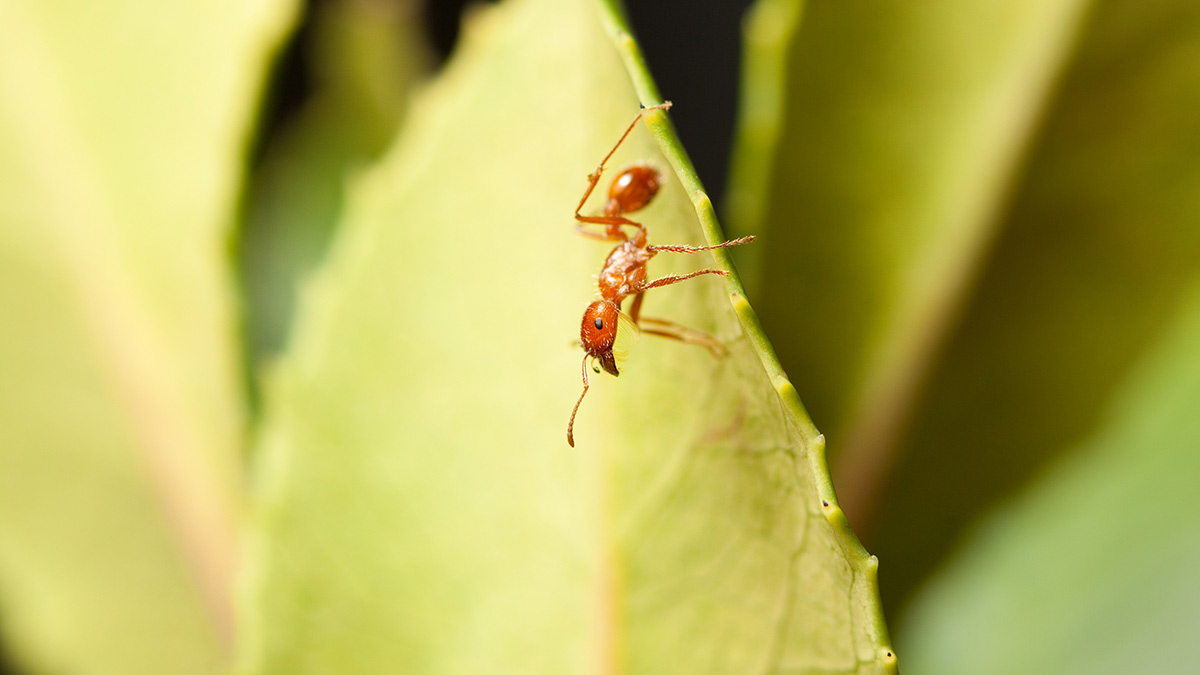 Photo provided by Zoëcon Professional Products/istock.com/abezonication
Photo provided by Zoëcon Professional Products/istock.com/abezonication
Fire ants
If you live in southern and southwestern states, fire ants are as common as the sunrise. These biting insects deliver a nasty sting, and can also damage lawns and electrical equipment.
Apply fire ant baits around fire ant mounds with a spreader or a scoop. For smaller colonies that are not visible for spot treatments, consider broadcast applications. It’s essential that product applications be made in dry conditions and reapplied after rainfall.
For the best results, take the time to determine when ants are foraging for protein and likely to cross paths with bait. Place a crumbled potato chip, corn chip or other greasy snack near the mound. If ants do not start to feed on the crumbs within 30 minutes, do not apply the bait. Wait a few days and retest to see whether the ants are foraging. Once you see ants taking the crumbs, it’s time to apply the bait.
With consistent use, mounds will dry up and mound movement will cease. In addition to targeted insecticide treatments, encourage clients to maintain good lawn health to prevent future ant infestations. Also, remind clients to bring pet food bowls indoors, as leaving pet food outside is like sending an open invitation to fire ants.
Ticks
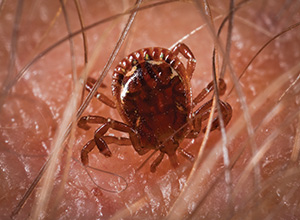
Photo courtesy of the Professional Pest Management Alliance
The National Pest Management Association predicts the 2019 tick season could be among the heaviest in years, so it’s important to develop your control plan now.
Ticks thrive in moist, humid environments outdoors. These blood-sucking insects quest on tall grasses, can be found under piles of chopped wood or leaves, and can latch on to pets and humans. Encourage clients to keep their backyards well maintained by regularly mowing the lawn and raking any weeds and leaves.
Once tick-friendly areas are identified, treat with a perimeter adulticide. When applying products for tick control, administer a coarse fan spray to vegetation, brush, branches, rock walls and other areas near habitation where ticks may harbor or quest. Treat the entire area rather than making spot treatments, and retreat as necessary to maintain control.
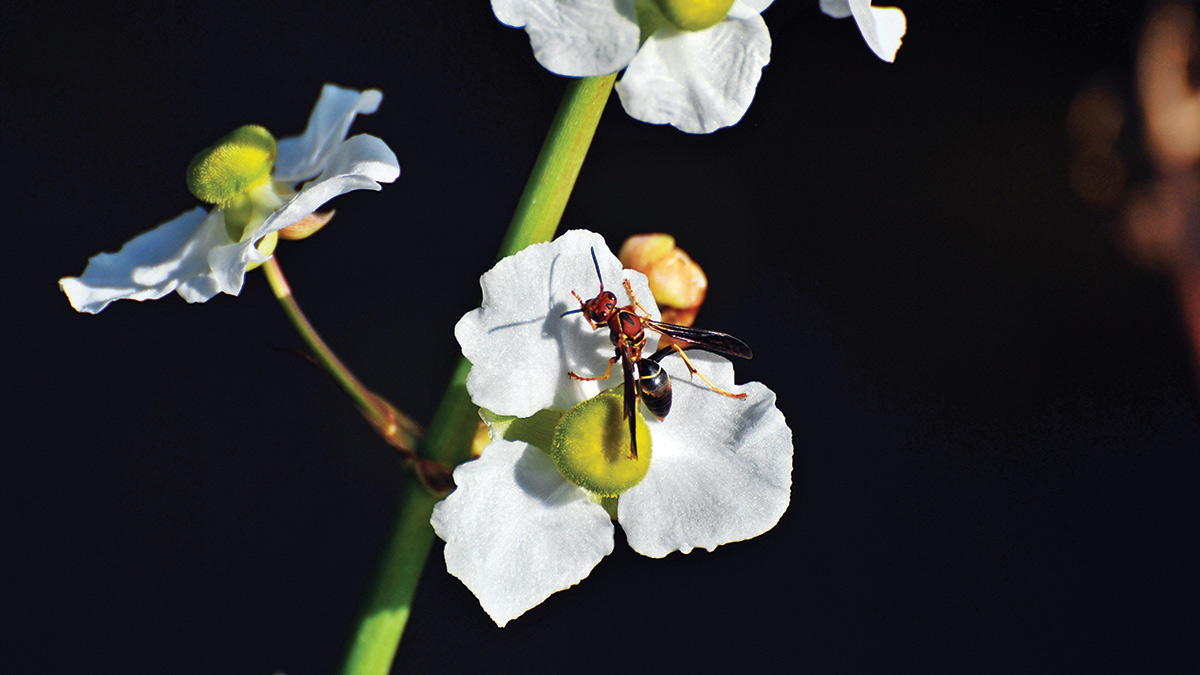 Photo courtesy of the Professional Pest Management Alliance
Photo courtesy of the Professional Pest Management Alliance
Wasps and hornets
To easily spot wasp nests, watch the flight path of returning wasps — they’ll lead you straight to the source.
The eaves and ledges around houses are common spots to find nests, but sometimes nests aren’t that obvious. Check play equipment like swing sets and tree houses; when overwintering paper wasps (Vespidae) emerge, for example, they tend to set up their nests on playsets left undisturbed during the colder months. Make sure to also inspect outdoor storage areas like sheds, decks, garages and crawlspaces for wasp and hornet nests.
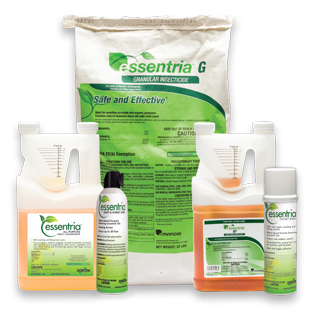
Photo: Zoëcon Professional Products
Once identified, treat visible nests with Essentria® Wasp & Hornet Spray for immediate kill of these stinging insects. This solution is formulated with essential oils and is designed for spraying up to 20 feet away. Essentria® Wasp & Hornet Spray foams up to control the pests, and is approved for use in attics and garages, as well as sensitive areas like schools.
Essentria® Wasp & Hornet Spray is one of five products from the Essentria® family of botanically based products from Zoëcon® Professional Products. For effective pest control, reach for this line of 25(b) Exempt pesticides. Featuring botanical active ingredients derived from the essential oils of plants, these environmentally friendly products offer broad application opportunities, including in sensitive accounts and uses around children, pets and in food-handling areas.
Learn more about the Essentria® line of products and all the product offerings from Zoëcon at www.zoecon.com.
This page was produced by North Coast Media’s content marketing staff in collaboration with Zoëcon Professional Products. NCM Content Marketing connects marketers to audiences and delivers industry trends, business tips and product information. The Pest Management Professional editorial staff did not create this content.
Header photo provided by Zoëcon Professional Products/istock.com/tinabelle